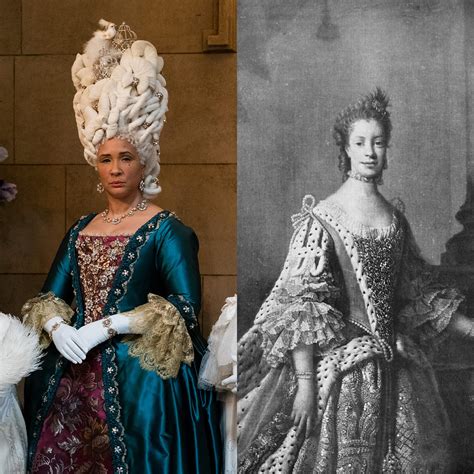The reign of Queen Charlotte of Mecklenburg-Strelitz, consort of King George III of Great Britain, marked a profound transformation in the realm of fashion and cultural expression. At the forefront of this sartorial revolution was the ubiquitous wig, an elaborate and iconic accessory that symbolized both status and style.

The Wig as a Fashion Statement
Queen Charlotte’s passion for wigs was evident from her coronation in 1761. She commissioned the renowned French wigmaker Léonard Autié to create a towering masterpiece that became the envy of European courts. Autié’s wigs for Queen Charlotte featured intricate curls, elaborate updos, and a profusion of jewels and feathers.
Over time, the queen’s love for wigs spread to her court and beyond. Wigs became an essential part of aristocratic attire, and their size and complexity grew exponentially. Hairdressers emerged as artists, pushing the boundaries of innovation with their creations.
The Wig as a Symbol of Status
In the 18th century, wigs held immense social significance. They denoted rank, wealth, and power. The larger and more elaborate the wig, the higher the wearer’s status. Queen Charlotte’s own wigs were so grand that they often reached a height of two feet, adorned with pearls, diamonds, and exotic birds.
Commoners and middle-class individuals also embraced wigs as a means of social mobility. By wearing a wig, they could signal their aspirations to a higher social standing. However, wigs were not without their detractors. Some critics condemned them as extravagant and artificial, while others saw them as a form of deception.
The Wig as a Form of Expression
Beyond their social significance, wigs also served as a form of self-expression. Women could use wigs to create a desired image, whether it be youthful, seductive, or regal. Wigs allowed for experimentation with different hairstyles and colors, providing a sense of artistic freedom.
Queen Charlotte’s wigs encompassed a wide range of styles and colors. She was known for her towering white wigs, which accentuated her fair complexion and dark hair. She also experimented with blonde wigs and even a wig made entirely of flowers.
The Decline of the Wig
By the end of the 18th century, the popularity of wigs began to decline. The French Revolution brought with it a shift towards simpler and more natural styles. Wigs gradually fell out of fashion, becoming associated with an outdated aristocracy.
However, the legacy of Queen Charlotte’s wigs lives on in modern fashion. Designers and stylists continue to draw inspiration from the elaborate and playful wigs of the Georgian era. Wigs have also made a resurgence in popular culture, appearing in countless films, television shows, and music videos.
| Wig Style | Occasion | Description |
|---|---|---|
| Coronation Wig | Coronation in 1761 | Towering white wig with elaborate curls, jewels, and feathers |
| Matrimonial Wig | Wedding to King George III in 1761 | Blonde wig with floral headdress |
| State Wig | Official functions | White wig with towering updo and pearl embroidery |
| Mourning Wig | Death of King George III in 1820 | Black wig with simple curls and a widow’s veil |
| Wig Style | Description |
|---|---|
| Fontange | Tall, elaborate wig with piled-up curls and a lace front |
| Marmotte | Wig with curled hair pulled back into a knot at the back of the head |
| Gainsborough | Wig with loose, flowing curls parted in the middle |
| Shepherdess | Wig with simple curls and a floral headband |
| Amazon | Wig with a high, cylindrical shape and a plume of feathers |
| Mistake | Description |
|---|---|
| Over-styling | Using too much hairspray or styling products can damage the wig |
| Incorrect placement | Wearing the wig too high or low on the head can create an unnatural look |
| Poor storage | Storing the wig incorrectly can lead to tangles and breakage |
| Overuse | Wearing the same wig too frequently can reduce its lifespan |
| Wrong color or style | Choosing a wig that does not match your skin tone or personal style can look artificial |
| Tip | Description |
|---|---|
| Use a wig grip | A wig grip helps keep the wig securely in place |
| Apply hairspray lightly | Use hairspray only to tame flyaways or hold curls in place |
| Brush the wig gently | Use a wide-toothed comb or wig brush to avoid tangles |
| Store the wig upright | Use a wig stand or mannequin to store the wig to prevent damage |
| Wash the wig sparingly | Wigs should be washed infrequently, about once every 6-8 weeks |
